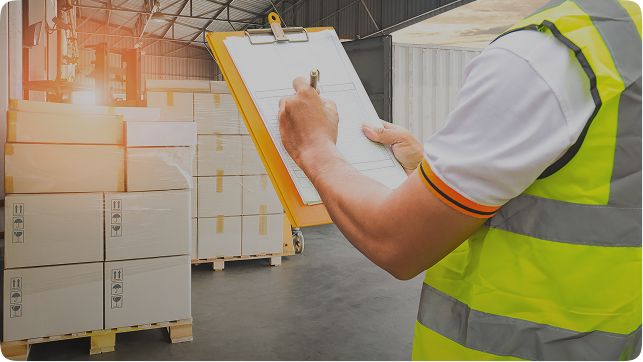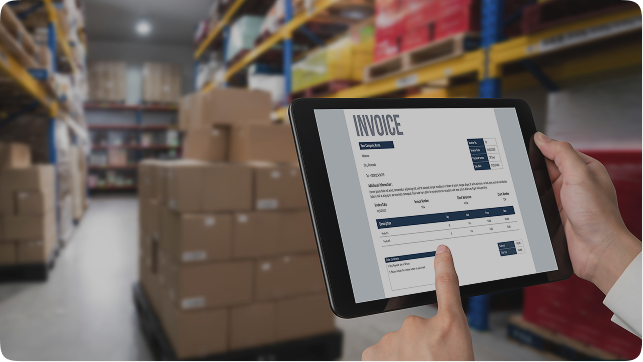Introduction – Freight Bills as a Challenge for Automated Processing
In logistics, every shipment creates a freight bill, a document that lists the charges for moving goods. It may seem like a simple invoice, but it plays a big role in billing, audits, and financial planning. Even a small error in these bills can lead to delays, disputes, or extra costs.
The problem is that freight bills are rarely simple. Each carrier uses a different format, with charges spread across several pages. Important details often appear in supporting documents like Bills of Lading (BOLs), Proof of Delivery (PODs), or reweight certificates. Putting all this information together is tough, especially for automated systems.
This is why freight bill processing is such a challenge. Traditional methods struggle with messy layouts and scattered information, leaving teams to spend hours cross-checking. AI, however, is changing this by turning complex freight bills into clear, structured data that businesses can rely on.
The Hidden Complexities Behind Freight Bill Processing
Multiple Pages with Scattered Charges
Imagine receiving a shipment invoice where the base freight charge appears on page one, while surcharges, fuel, handling, accessorials, are spread across later pages. To make matters worse, the same shipment may include multiple BOLs, each tied to different charges.
For finance or audit teams, reconciling these details is a tedious process. It requires flipping through multiple documents, cross-referencing totals, and making sure nothing slips through the cracks. A single missed surcharge or incorrectly consolidated charge can throw off the entire billing accuracy.
This fragmentation makes automation tricky. Legacy systems often read page one as the “main invoice” and miss charges buried deeper in the document. Without proper linkage, organizations risk underpayments, overpayments, or disputed invoices.
Carrier-Specific Formats with Inconsistent Layouts
Another big challenge is that every carrier designs their freight bills differently. Some put the main charges at the top, while others list them at the bottom. The same fee may even be called by different names one carrier might write “Fuel Surcharge,” while another uses just “FSC.”
On top of that, documents like PODs or BOLs may be attached as separate files or included somewhere inside a multi-page invoice. This makes it hard for automated systems to know where to look or how to match the information.
Because of these differences, traditional systems often make mistakes or miss data. That means teams end up spending more time checking and correcting invoices by hand.

When Poor Data Flow Turns into Delays, Disputes, and Higher Costs
Delays in Audits
Freight bill audits work best when all the data flows smoothly. But when charges are spread across different pages and important documents like BOLs or reweight certificates aren’t linked, auditors have to check everything by hand.
This slows down the review process and can lead to late payments or missed chances to dispute wrong charges. For example, if a reweight certificate isn’t attached to the original bill, the auditor has to search through files to confirm it. This extra step takes time and increases the chance of mistakes.
Higher Labor Costs for Manual Entry
When automation doesn’t work well, companies end up relying on manual data entry teams. Every charge, BOL, or supporting document must be typed in and verified by hand.
For high-volume shippers, this quickly becomes expensive. Imagine a shipment with three BOLs, the team has to enter each one, match them, and connect them back to the main invoice. Now, multiply that by hundreds of shipments a day. The result is a process that is slow, costly, and prone to human error.
Transforming Freight Bills into Clean, Searchable, Actionable Data
This is where AI takes the stage. Instead of relying on rigid templates, AI-based systems can understand, extract, and structure data from any freight bill format, no matter how messy.
Detecting and Extracting Data from Unstructured Layouts
Freight bills don’t always follow a clear structure. Charges can appear anywhere on the page, and extra documents like PODs or BOLs may be mixed in. This makes it hard for normal systems to capture all the details.
AI solves this by using OCR (Optical Character Recognition) to read the text and NLP (Natural Language Processing) to understand the meaning. It doesn’t just copy words — it figures out whether something is a base charge, a fuel surcharge, or a reference to another document.
For example, if a fuel charge is hidden on page two or a POD is placed inside a long PDF, AI can still detect it, pull out the information, and connect it to the right invoice.
Mapping Charges and Surcharges into Structured Fields
AI also excels at normalizing terminology across carriers. Whether one carrier calls it “FSC” and another “fuel surcharge,” AI maps them into a standardized charge category. This ensures consistency in reporting and simplifies analysis.
With structured data, logistics teams can easily filter, sort, and compare charges across carriers without wading through inconsistent terms. For instance, instead of reconciling ten different labels for accessorial charges, AI consolidates them into one category.
Multi-Page Linking for Complete Invoice Records
One of AI’s most powerful advantages in freight bill processing is the ability to link multiple pages and documents automatically. AI recognizes that pages belong to the same invoice, even if the charges are scattered. It then creates a unified, complete record.
This eliminates the risk of missed or mismatched charges. For example, when AI processes a shipment invoice with three BOLs and an attached POD, it ties everything together into one searchable, structured record. The result: clean, accurate data with zero manual reconciliation.

Operational Gains
Single, Searchable Structured Data File per Invoice
With AI-powered freight bill processing, each invoice is turned into one clear data file. Teams no longer need to dig through PDFs or scanned pages. They can quickly search for charges, filter by carrier, or pull up supporting documents in seconds.
This clean data can also be connected directly to ERP systems, freight audit tools, or financial dashboards, making it far more useful than raw invoice files.
Reduced Processing Time and Improved Audit Readiness
AI also makes the whole process much faster. What once took days of manual checking can now be done in just minutes.
This not only saves time but also makes audits smoother and more accurate. Since every charge, surcharge, and document is captured neatly, disputes with carriers are reduced.
For example, if a carrier adds an unexpected fee, AI can spot it immediately, compare it with contract terms, and give finance teams the proof they need, such as the POD or reweight certificate, to validate or challenge the charge.
Conclusion – AI as the Bridge Between Complexity and Operational Clarity
Freight bills are often messy, inconsistent, and full of scattered details, but they don’t have to slow down your business. With AI-powered freight bill processing, companies can turn piles of unstructured invoices into clean, accurate, and usable data.
AI doesn’t just read documents; it understands them. It can pick out hidden charges, standardize terms across carriers, and connect multi-page invoices with their supporting documents. This means fewer errors, faster audits, lower costs, and smarter financial decisions.
But the real power of AI goes beyond efficiency. It helps logistics teams scale with confidence, reduce disputes, and stay ready for future growth.
In a business where every number matters, AI becomes the bridge between complexity and clarity, turning freight bills from a constant headache into a real competitive advantage.
Enhancing your workflow through
AI integration is key to future success.
processes and improve efficiency!





